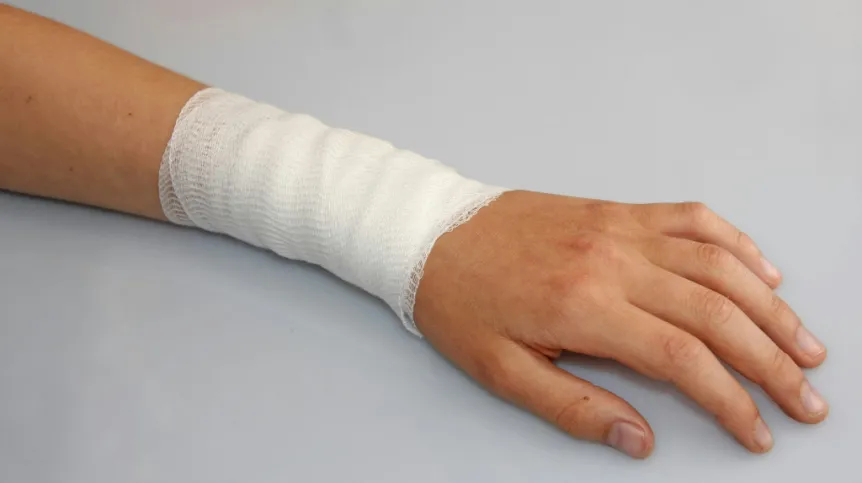
Dressing material, which allows faster regeneration of wounds infected with MRSA, has been developed and patented by scientists from Gdańsk University of Technology. The material is non-toxic, provides greater absorbency, stops bleeding faster and absorb odours.
The number of patients suffering from non-healing skin lesions in Poland reaches 100,000. In the US it comes up to three million. The hardest to heal are wounds infected with bacteria. Especially difficult are the cases of treatment of wounds infected with strains of Staphylococcus aureus. Every hour in the US two people die due to such infection. This is because many microbes have developed resistance to almost all of the currently used antibiotics.
Researchers from Gdańsk University of Technology - under the supervision of Dr. Grzegorz Gorczyca - found a solution. They have developed a unique technology for the production of materials from collagen, gelatin and a natural compound - chitosan. It eliminates the most important issues that occur with materials normally used for this purpose materials.
"It has been shown that the resulting product is not inferior in any way to the best available materials on the market, and even has certain advantages" - reads the release sent by Gdańsk University of Technology. These include lack of cytotoxicity, higher absorption, antioxidant properties and comparable activity in the inactivation of the bacteria Staphylococcus aureus, while reducing the risks associated with secondary resistance. The patented method allows to produce highly effective dressing materials, and the technology reduces the time of their production and ensures lower production costs.
The biggest advantages of the material, according to the author of the invention, include antioxidant properties, high absorbency and the biopolymer composition that provides a suitable environment for the wound regeneration process. "Other important properties include faster inhibition of bleeding than in the case of dressings currently available on the market, as well as good absorption of odours. These dressings are also very absorbent - 1 g of biopolymer can bind up to 50 g of liquid" - explained Dr. Grzegorz Gorczyca.
The invention is not a random result of research. Dr. Grzegorz Gorczyca came up with his idea when he had to face the problem of hard-to-heal wounds. "A few years ago I hurt my hand, and had to go to the clinic every day to change the dressing. Dressings refunded by the National Health Fund did not provide optimal wound-healing environment. I brought my own, which I bought at the pharmacy. Because the price was quite high, I thought it would be worthwhile to consider the development of a cheaper material. Thus began my scientific adventure with chitosan" - said Dr. Gorczyca.
A few weeks ago, Gdańsk University of Technology received a positive decision of the Patent Office on awarding two patents relating to methods of producing innovative dressings. International patent protection procedure has also been initiated.
"The innovative potential of the technology is so big that it has a real chance to be implemented by domestic or foreign manufacturers. Detailed market research and discussions with investors are carried out by the Centre for Knowledge and Technology Transfer of Gdańsk University of Technology" - reported the Gdańsk university.
Manufacturing technology of biomaterials based on chitosan is the work of a group of scientists from Gdańsk University of Technology under the supervision of Dr. Grzegorz Gorczyca, in the Foundation for Polish Science programmes (VENTURES, IMPULS). It has been used to obtain chitosan hydrogel, which is ideal for the production of cosmetics and medical devices. This ingredient has already found use in the preparation CHITOZAN NATURALNY SUN, produced under license granted by Gdańsk University of Technology.
PAP - Science and Scholarship in Poland
ekr/ mrt/
tr. RL













